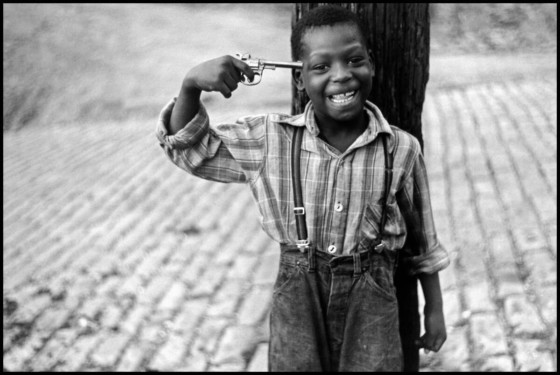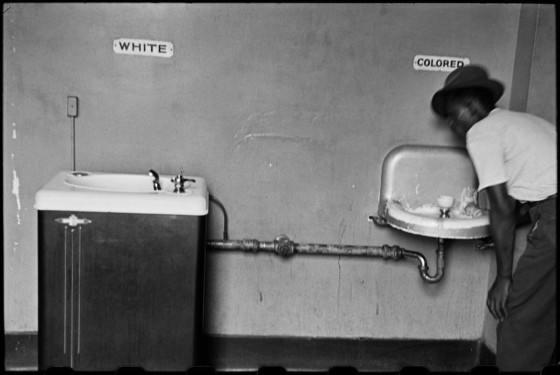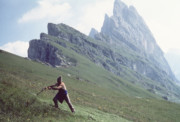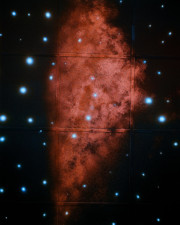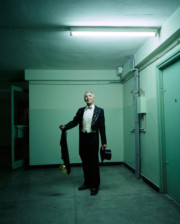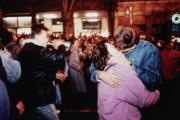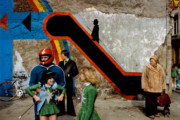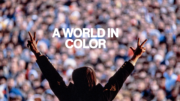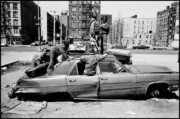Black History Month: A Curation by Eli Reed
For Black History Month 2025, Eli Reed curates a selection of images from the Magnum archive, exploring Black history over seven decades
I am an African American living in America and I was introduced to the normal day-to-day experiences of a young boy in a number of ways that were visually confusing. I witnessed the differences in how people of color were treated early on. It varied from the fair to the not-so-fair in normal life. I saw the imbalance of daily life from what my parents went through each day. I also witnessed moments of daily humanity in my hometown of Perth Amboy, New Jersey. It helped.
I began a slow slide into seeing the photographic images of Black American life made by two legendary Black photographers. The work of Gordon Parks and Roy DeCarava (Director of the Black American photo group Kamoinge from 1961 to 1965), who made powerful images of the ongoing true Black life and beyond.
The work of Magnum’s coverage of the Civil Rights Movement connected with me when I was in my early teens. It was a difficult time for many Black photographers to get published showing the work of Black life that spoke through the reality that Black Americans went through.
The work done by different Magnum photographers helped open a door that came out of that movement. It went past the reality of work that was beyond the brief look into a gutted reality, and was dealt with by walking away as if it were an empty bowl of flowers. As a photographer there are often failed attempts, but also a time when you have to deliver a proof. I remember a discussion with Misha Erwitt, a fellow journalist and friend, about our observations regarding what is a good photograph. He stated that a good photograph is a good picture that you can not get out your mind once you have seen it.
Leonard Freed
His book, Black in White America, was delivered very well and with the accuracy of truth while photographing it. There were things started in the seeing and capturing of photographs with a 50mm camera lens that spoke with accuracy. When I think about it, I cannot remember seeing Leonard that often but he spoke well in a quiet way with his camera and always with a sense of humor at the times.
W. Eugene Smith and Bruce Davidson
Both Eugene Smith and Bruce Davidson have done photo essays that speak to the power of telling stories that matter within the life force that guides the human heart. The passion that matters becomes the core of their lives, dealing with photography that speaks, at times, beyond the reality of speech or thought. A statement from Smith was interesting: “Let truth be the prejudice.” It seemed to me a worthwhile thought.
I was fortunate enough at one point in my early days to be accepted at the International Center of Photography. I was accepted for the two Eugene Smith and Bruce Davidson weekend workshop classes in 1975. Both classes were amazing. I also volunteered to work as a volunteer production assistant for Smith’s Minamata photo essay exhibition at the International Center for Photography. 1975 was an interesting year.
Alex Webb
Webb is one of the true photographers that brings the quality and magic of color alight, even as the light is doing its best to escape… It then realizes that it has to surrender to his defined vision of what is and will always exist in his visionary captures. I remember a day when I first saw one of what seemed to me to be a powerful book of strength — an experience of waves coming after the viewer. The book was Under A Grudging Sun. His connection with clarity when documenting fellow human beings is always brilliant.
Hiroji Kubota
Hiroji goes about his work in a way that produces images that are thoughtful and productive for documenting the worth and understanding of the very existence of life as human beings — as we move through the excesses and joys of what it means to live in the bodies of human beings. I think of two separate photographs that burn themselves into my brain. One is a photo Hiroji made of Black Panthers gathering in a field of snow in Chicago with a group with their fists raised toward the sky in salute. The other photo was also made from a high-up blimp that captures the lure of energy, and everything that matters in New York City.
Eve Arnold
Eve produced a mountain of photographs all over the world with various book projects including the movie industry and taking a trip all over the U.S.A., spending some time working along with Nazis and Black Muslims as she made images that told their stories using only natural light as she made her candid photos, without posing her subjects. It seemed as if she got along with everyone. She was a cool cat.
Bruce Gilden
Bruce is a man who gets closer to his subjects than his subjects could possibly imagine — but he is the truth-teller who delivers. His work speaks volumes and his photographs are as truthful as you are willing to accept, both for the subject and for the observer. He is a person of truth and someone who speaks his mind well before the observer has time to back up toward their planned escape. He speaks a truth that he understands, and he is prepared to share it with doubters. If they have calmed down enough they would more than likely find that he is a man of truth who cares and it shows if they care to look into the heart of the work.
Elliot Erwitt
Elliot was one of a kind. He was the man who is quietly everywhere, in places where something more than you imagine is happening. He is there and capable, if he was in the mood, of figuring out how to make the photo that would join the pages of history together, in so many different ways. With his images it becomes impossible to lose sight of what actually happened — but you were in the room of bright lights and something special going on in that “Elliot Erwitt State of Grace.” His photographs are always worth viewing for their humor and for the stunned sense of history.
An Erwitt quote is delivered: “Pictures have to do with heart and mind and eye and they have to communicate and as long as they do that, it’s valid.”
Paul Fusco
Paul passed on something that I also strongly believe in: “I want the viewers to be moved into the lives of the people that they are looking at. The visual experience is incredibly emotional.”
Steve McCurry
Steve has also said something in the past that I view as important: “But what matters most is that each picture stands on its own with its own place and feeling.”
Constantine Manos
Constantine was a gentleman of the old who was a marvelous photographer. He moved seriously from the black-and-white photography world into the serious color photography world where he became a true master of color photography. He had made black-and-white images of a Black family mourning the loss of a young man in Vietnam. He had made a very moving image of a senior family member at the funeral. I watched the color work of Constantine develop from a distance to a new level of excellence. He was a true artist, developing art in a powerful way.
Guy Le Querrec
I recently viewed Guy’s photographs taken at a New York City jazz club that were beautiful. It made me want to go to the place and just sit back and enjoy the music. Perhaps closing my eyes after looking at his beautiful work would help transport me there — perhaps in my dreams. Well, that is possibly another story for another time.
All of the above has managed to remind me about how fortunate it has been that I could experience, through the work of these photographers, some of my journeys— journeys that inspired me to rise above some of what I have experienced of a living darkness. The darkness hangs on via the difficulty of some to recognize their futility of viewing people of color as inadequate because they are not white.
That is a pathway to the darkness of insanity at best. I wonder. It is not a good time, but this is no real surprise to those who have had no hope of walking forward.
True hope is possible when those on board are allowed to dream and witness a real life that is truth walking toward us, and not away with careless and angry footsteps.












